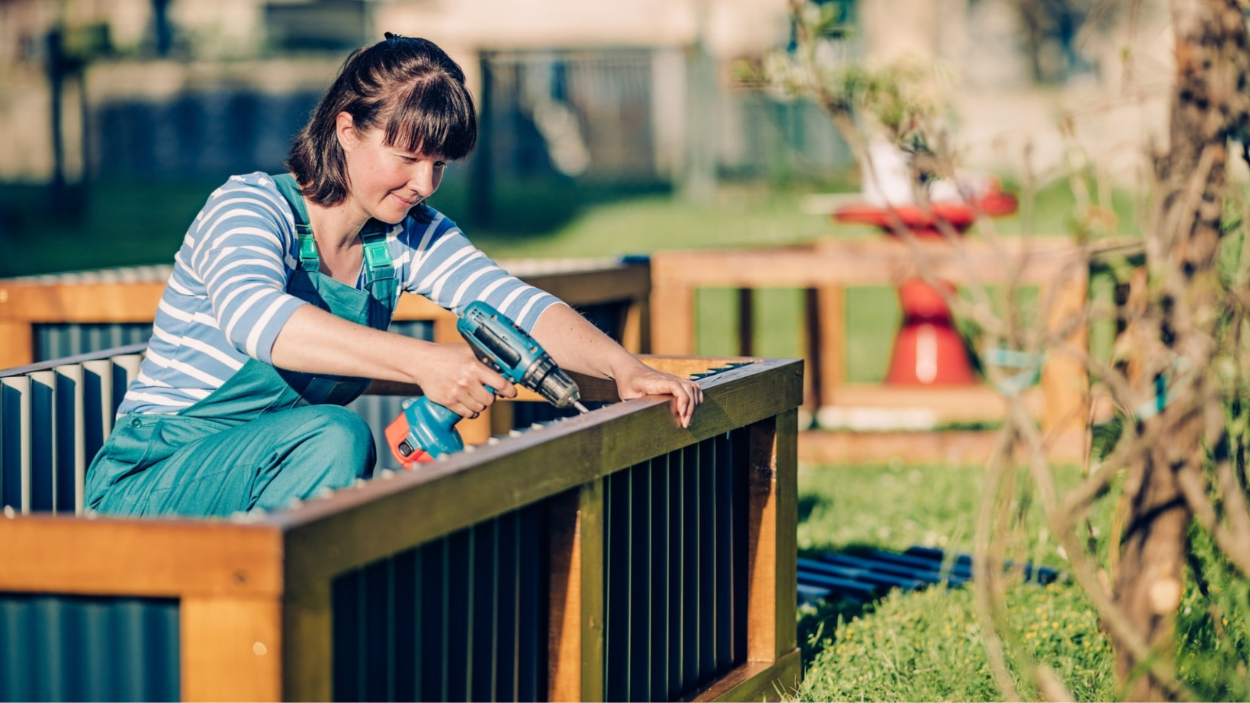Comparing raised garden beds with traditional in-ground vegetable gardening, there are numerous benefits. They offer better weed and pest control, greater soil drainage, and warmer temperatures in the soil, which promote greater yields and faster plant growth. They also lessen the necessity for bending over and kneeling when gardening. Raised garden beds can also be created to provide your garden organization and aesthetic interest.
How to build a raised garden bed
1. Preparation to build a raised garden bed
Before building a raised garden bed, there are several things you should prepare:
Step 1. Choose a location: Choose the location to place your garden bed. Calculate the shape of the garden, the style of your garden as well as the plants you want to plant for the selected garden corner.
Step 2. Determine the size: You should choose the size of the planter bed based on the size of the garden, and the type of plants you want to grow in that pot. And you can consider whether the garden bed is big or small enough to be used flexibly for many purposes.
Step 3. Choose the materials: We can choose wood, cement, metal, or plastic to make our garden bed. Each material will have different prices and properties, if you want to learn more about each type of material, please go to our other articles.
Step 4. Prepare the site: After choosing a suitable location for the garden bed, clean areas such as weeds, mud, stones, etc…
Step 5. Gather tools: Gather the tools you will need, such as a saw, drill, screws, and a level.
Step 6. Plan the soil mix: Prepare the soil you will use for your plants. From my experience, I recommend mixing a soil mix consisting of potting soil, a bit of gravel, and sand to increase drainage.
2. Building a raised garden bed
Once you have your materials and tools, follow these steps to build a simple raised garden bed:
Step 1: Choose a location for your plant where the sun can reach at least 6 hours daily. Make sure the area is flat and safe for gardening.
Step 2: After cutting the garden bed, use metal to secure the pieces together. Make sure chemicals from fertilizer or soil can't damage those components…
Step 3: After matching the pieces of the potted plant, place it securely and hold onto the selected area. Notice that the soil is well placed.
Step 4: Fill the bed with earth and compost, leaving a 6-inch margin at the top. The ideal soil mix should consist of one-third garden soil, one-third compost, and one-third vermiculite or perlite for better drainage.
Step 5: Thoroughly water the soil to help it settle and ensure it is properly moist before planting.
Frequently Asked Questions
1. What materials can I use to build a raised garden bed?
You may create a raised garden bed using a wide range of various materials. Because it is easily accessible, simple to work with, and reasonably priced, wood is a popular choice. You can use lumber that is naturally resistant to decay and insects, such as redwood or cedar. Stone, brick, metal sheets, and repurposed materials are further alternatives.
2. How do I maintain my garden bed?
Appropriate watering, weeding, fertilizing, controlling pests and diseases, and soil upkeep are crucial for maintaining your raised garden bed. Frequently check the soil's wetness and water thoroughly when necessary. Weeds should also be pulled by hand or using organic mulch, fertilized with organic matter, checked for pests and illnesses, and treated with natural methods.
3. Do I need to add a liner to my raised garden bed?
A liner, such as chicken wire or landscaping cloth, can help keep pests and weeds out of the bed. Landscape fabric is a woven textile that discourages weed growth while allowing water to pass through. A mesh material called chicken wire can be used to exclude animals that dig burrows. If you control any weed or pest issues and maintain high soil quality, it is not necessary. If you decide to use a liner, ensure sure it is firmly fastened to the bed's sides and bottom. Furthermore, stay away from using plastic as a liner because it can obstruct water drainage and cause root rot.
Final Thought
Below are our team’s experience and research after 1 year of gardening, hopefully, every gardener may have the prettiest yard.




